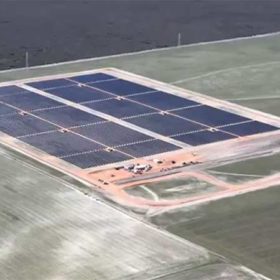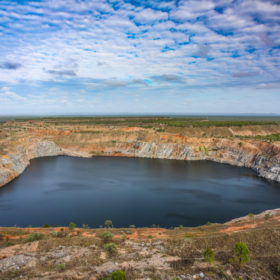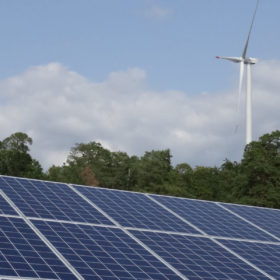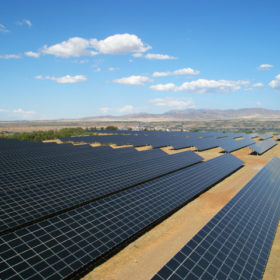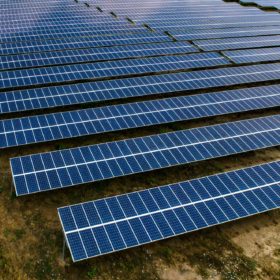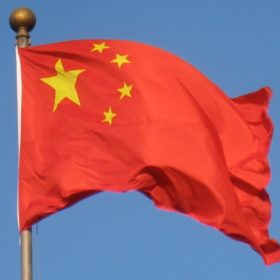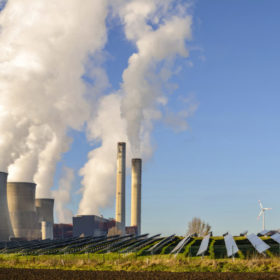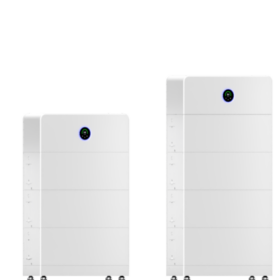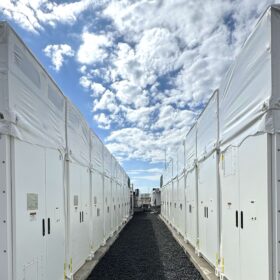Long read PT 1: Tracking in the wind
Extreme wind events are the biggest cause of failure and insurance claims for any PV plant, according to Thorsten Kray, Head of the Building Aerodynamics Department at Institut für Industrieaerodynamik GmbH, Aachen. For structural reasons, single-axis trackers are more prone to the issues than fixed-tilt structures. In this two-part series, pv magazine will examine the ways that wind impacts trackers and what EPCs and investors need to look out for, in addition to outlining a range of approaches from big tracker suppliers that were designed to mitigate wind-related damage.
Juwi lands Greenough River solar farm expansion deal
Germany’s Juwi will take over the stalled Greenough River solar farm expansion in the wake of RCR Tomlinson’s collapse. The second stage involves construction of an additional 30 MW of solar PV at the site.
Kidston transmission line funding paves the way for more solar and wind
The Queensland government has pledged to support Genex’s project at Kidston with up to $132 million. The funding will be used to build a single circuit transmission line and connect a massive pumped hydro project with the main grid, unlocking additional stages for the clean energy hub, including up to 270 MW of additional solar and up to 150 MW of wind.
It’s official: Large-scale Renewable Energy Target achieved more than a year early
The Clean Energy Regulator has confirmed it has approved enough capacity to meet the Large-scale Renewable Energy Target (LRET). While this is a great achievement for the renewables industry, the question remains what comes beyond 2020. Although analysts expect a slow down, ANU researchers find the record installation rates will see Australia surpass the scrapped target of 41,000 GWh of renewable energy generation around the end of 2020.
Canadian researchers have done the math on optimizing PV output
Mathematicians at Canada’s University of Waterloo who turned their attention to solar power have developed an algorithm they say offers better control over PV plant output. The researchers estimate the algorithm could improve the output of a 100 MW power plant by almost a million kilowatt-hours per year.
Debrief: The big-PV outlook for Australia and Vietnam after recent solar rushes
Despite what Rystad Energy analysts describe as “a few teething issues” caused by the rapid uptake of solar PV, and renewables in general, in Australia and Vietnam, the flow of proposed utility-scale solar projects in both countries looks set to continue over the coming few years.
Food and energy tussle as Victoria approves three controversial new solar farms
The Andrews Government has approved three new solar farms in the Shepparton region with a combined generative power of 175 MW. However, some residents are upset at the loss of prime agricultural land and the now redundant irrigation equipment which had been upgraded through government grants.
China to fund 450 MW of solar capacity in Bangladesh
The two nations are due to sign an MoU today to set up the capacity in the north of Bangladesh along with 50 MW of wind power facilities in the south, near the port of Payra. China will supply an estimated $500m with the host nation freeing up land for the projects.
China Power figures show how much cheaper solar is than coal
A mix of higher operating costs and ageing coal assets – plus historically generous solar tariffs – meant the utility banked more profit from the 1.53 TWh of solar electricity it sold in the first half than it did from 25.9 TWh of coal-fired power.
Massive HECO solicitation will bring 900 MW of renewables to Hawaii
In an effort to replace two aging power plants, Hawaiian Electric Industries has launched a roughly 900 MW procurement, the largest in the utility’s history, across the islands of Oahu, Maui and Hawaii.
